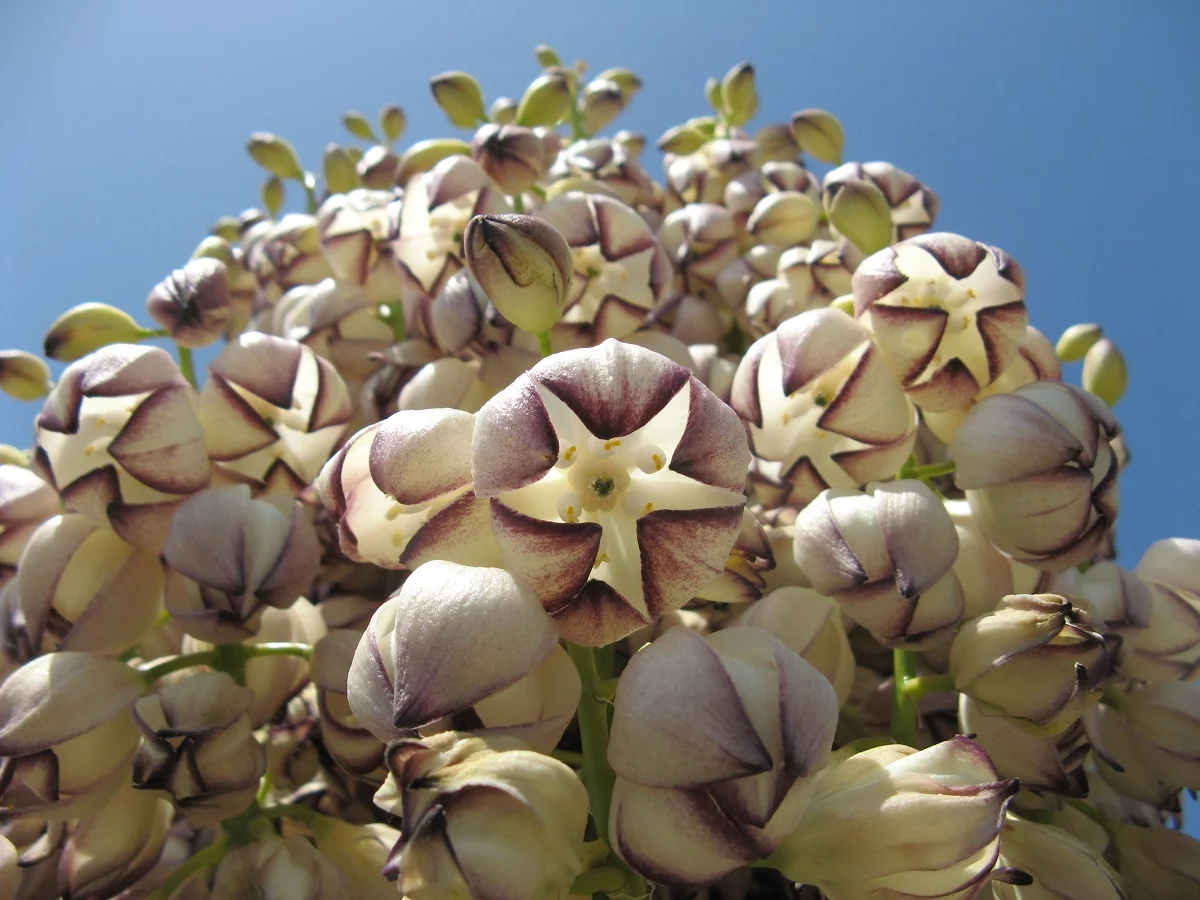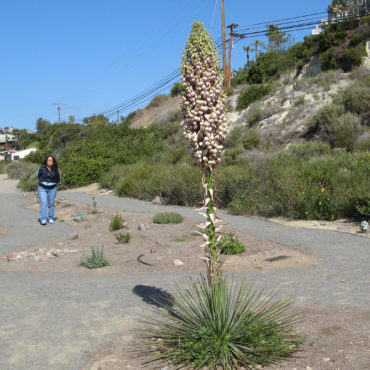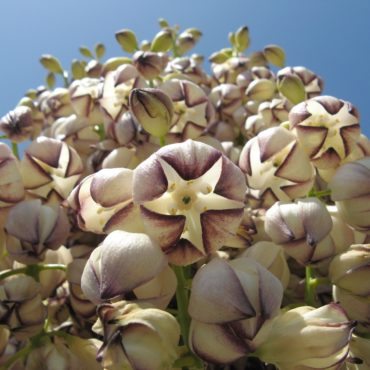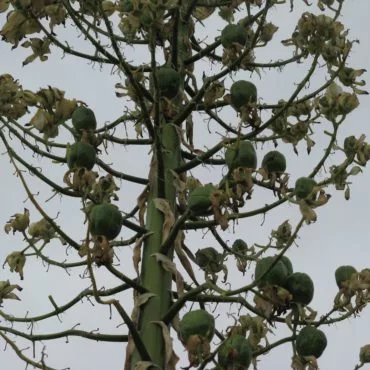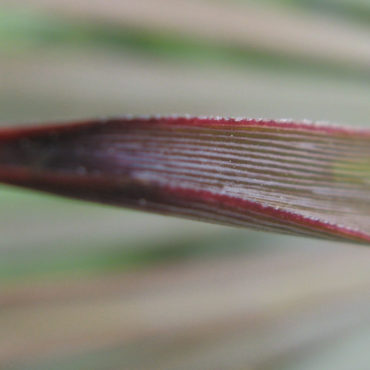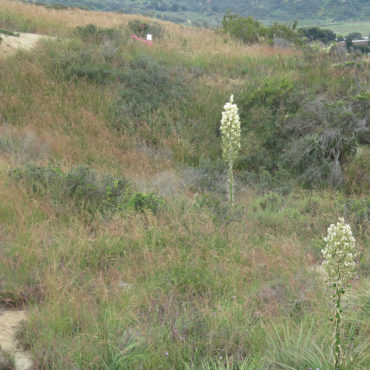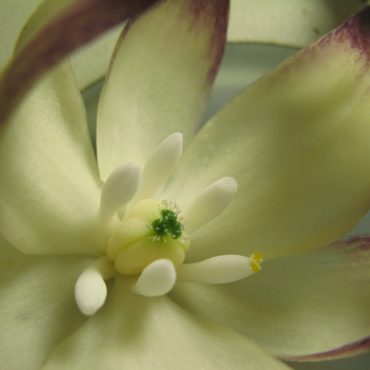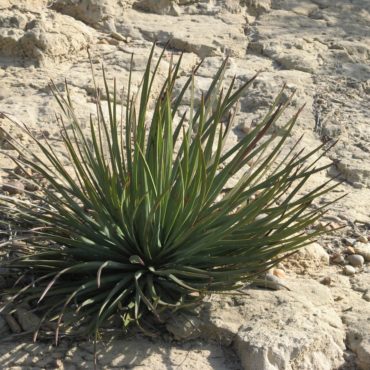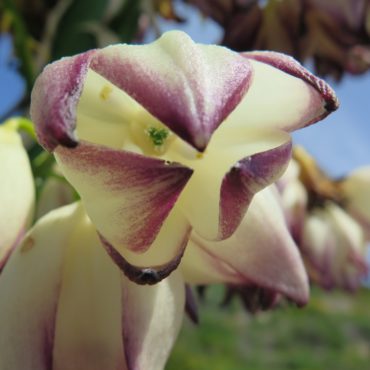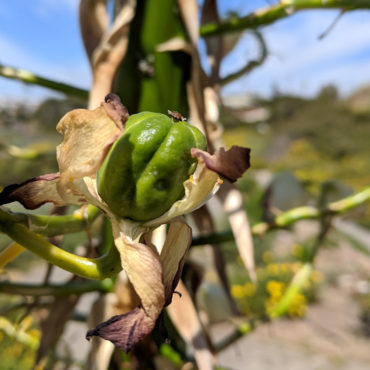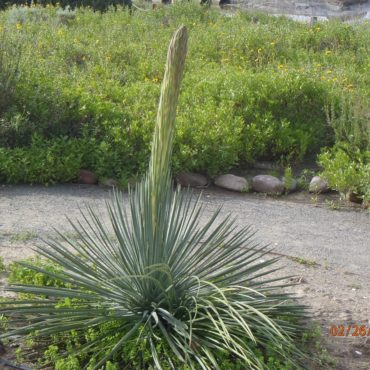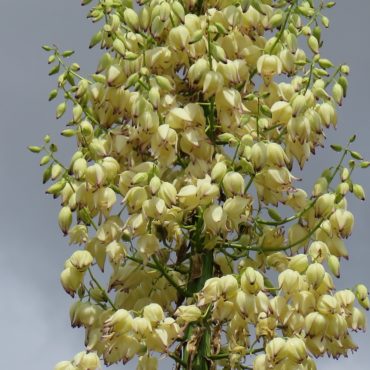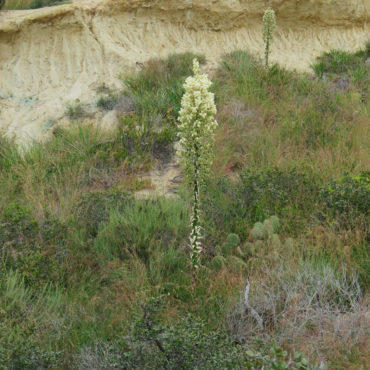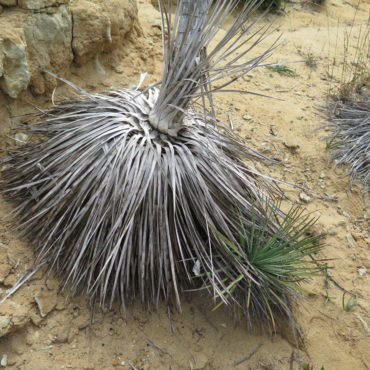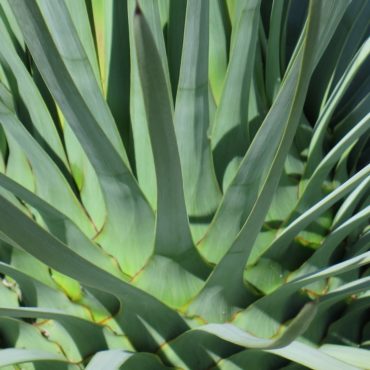Chaparral yucca is a perennial that grows 8-10 feet from a dense basal rosette of stiff, strap-shaped, gray-green leaves. The tough, leathery leaves are one to three feet long, fibrous, and tipped with a sharp spine. The margin has tiny but sharp serrations.
Fragrant white or purple-tinged flowers appear between five and eight years of age, in a large, conspicuous cluster at the top of one long, unbranched stalk, several feet long. The flower stalk grows very quickly, four to six inches (10-15 cm) per day.174 Larger flower clusters contain hundreds of blossoms and may reach four feet (1.5 m) in length. Bisexual flowers are bell-shaped, about 1.5 inches (3.5 cm) across, extended horizontally or pendant from their pedicels. There are three sepals and three petals that are indistinguishable from each other (collectively called tepals). Tepals are mostly cream colored, more or less edged with purple. There are six stamens with very thick, white filaments. Orange pollen is produced in discrete packets, pollinia, two per anther. The single pistil has a superior ovary with a thick style and a green, three-lobed stigma, which is fringed around the edge. Chaparral yucca usually blooms between early March and May.1
After fertilization, the pedicel reverses and the maturing fruit is erect, a plump green capsule with six shallow longitudinal grooves. The capsule splits open from the tip to expose six columns of seeds, with numerous flattened seeds per column.
Each chaparral yucca flowers only once after which the entire plant dies. Before flowering, a plant may produce smaller plants (“pups”) around the base. Thus the dead stalk of the original plant may leave behind one or more smaller plants, genetically identical to the original.

